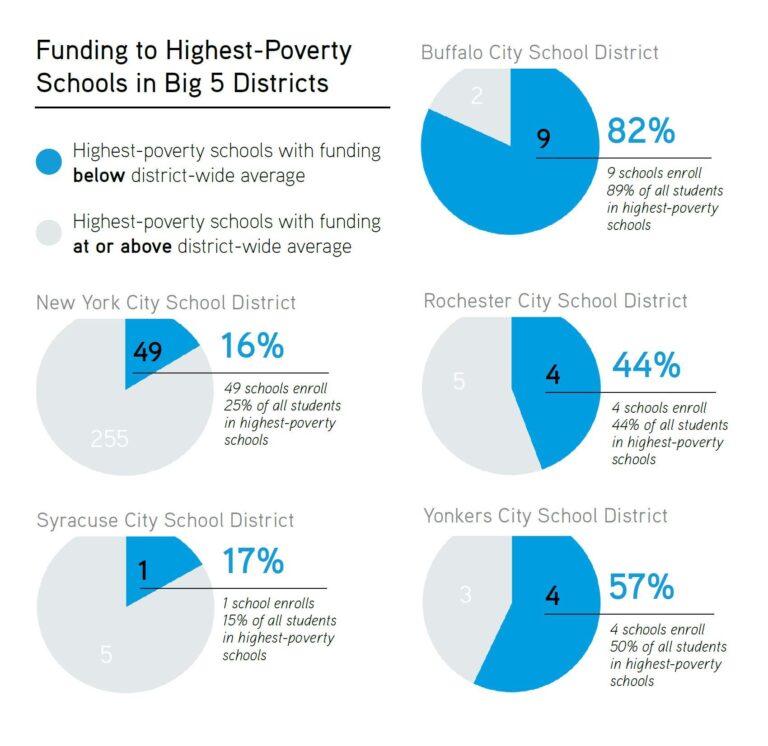New York City’s public schools face a potential financial crisis as they could lose up to $2 billion in funding if the federal Department of Education is abolished,according to recent reports. The Department plays a critical role in distributing federal aid that supports various educational programs across the city. With lawmakers debating the future of the federal agency, educators and officials are sounding the alarm about the critically important impact such a move could have on millions of students and the overall quality of education in New York City.
Potential Financial Impact on NYC Schools from Federal Department of Education Cutbacks
The potential dissolution of the federal Department of Education poses a severe threat to New York City’s public school system, with estimated losses nearing $2 billion in critical funding. This funding plays a vital role in supporting a wide range of educational programs, including special education, free and reduced-price lunch services, and after-school initiatives that benefit thousands of students daily. Without this financial backbone, schools may face cuts in staffing, resources, and essential student services, exacerbating existing inequalities and undermining educational quality.
Key areas at risk include:
- Title I Grants: Targeting low-income schools, these grants ensure equitable learning opportunities.
- Special Education Funding: Supporting individualized education programs (IEPs) for students with disabilities.
- School Nutrition Programs: Providing meals that many students rely on for daily sustenance.
- After-School and Enrichment Activities: Crucial for academic support and social advancement.
| Funding Source | NYC Allocation (in $ millions) | Potential Impact |
|---|---|---|
| Title I Grants | 850 | Major cuts to low-income student programs |
| Special Education | 600 | Reduced support for students with disabilities |
| School Nutrition | 350 | Less meal funding, affecting food security |
| After-School Programs | 200 | Elimination of enrichment and safety nets |
How Loss of Federal Funding Could Affect Student Services and Programs
The potential elimination of the federal Department of Education threatens to severely disrupt New York City schools, which currently rely on approximately $2 billion in federal funding annually. This crucial financial support bankrolls a wide array of programs designed to enhance student learning and safety, ranging from specialized special education services to extensive after-school initiatives. Without these funds, school districts may be forced to cut back on resources that serve thousands of vulnerable students across the city.
Key student services and programs at risk include:
- Title I Grants: Supporting schools with high numbers of low-income students.
- Free and Reduced-Price Lunch Programs: Ensuring nutritional needs for millions of students.
- Special Education Services: Providing tailored instruction and resources for students with disabilities.
- After-School and Enrichment Programs: Offering academic support and safe environments beyond school hours.
Such cuts could widen the achievement gap and disproportionately affect marginalized communities,making the educational landscape more inequitable. The following table summarizes the potential impact on NYC’s main student support categories:
| Service/Program | Approx. Annual Federal Funding | Primary Beneficiaries |
|---|---|---|
| Title I Grants | $800 million | Low-income students |
| Special Education | $550 million | Students with disabilities |
| Nutrition Programs | $400 million | All students with financial need |
| After-School Activities | $250 million | Students seeking enrichment & support |
Local Officials Respond to Threats Against Federal Education Funding
Local officials in New York City have voiced strong opposition to recent proposals threatening the federal Department of Education’s existence, fearing a catastrophic impact on public school funding. With the department responsible for directing billions of dollars nationwide, its potential elimination could deprive NYC public schools of approximately $2 billion annually. This funding supports essential programs such as special education, free and reduced-price lunches, and after-school initiatives, all critical to maintaining equitable educational opportunities for the city’s diverse student population.
City leaders emphasize the broader implications, urging stakeholders to consider:
- The ripple effect on teacher salaries and contract renewals
- Disruption of federal grants that supplement local education budgets
- The risk to vulnerable communities that heavily rely on federally funded resources
In response, a coalition of elected officials is preparing to lobby Congress to safeguard this funding, highlighting education as a non-negotiable cornerstone of the city’s future.
Strategies for NYC Schools to Mitigate Budget Shortfalls Amid Uncertainty
To navigate the looming financial crisis,NYC schools must prioritize strategic spending and seek alternative revenue streams. Maximizing community partnerships can provide resources and support, such as after-school programs and technology donations, helping to offset lost federal funds. Schools can also adopt rigorous cost-control measures, including consolidating administrative functions and optimizing energy use across campuses. Leveraging data analytics to track expenditures and identify inefficiencies will enable more informed financial decisions in real-time.
Additionally, advocacy for local and state-level support is essential. Lawmakers could consider temporary tax adjustments or bond measures targeted specifically at education funding. Public-private partnerships present another viable avenue for investment in infrastructure and enrichment programs without solely relying on government aid.Below is a simplified comparison table illustrating potential funding sources and their impact on school budgets:
| Funding Source | Estimated Annual Value | Stability |
|---|---|---|
| State Grants | $800M | Moderate |
| Local Taxes | $1.2B | High |
| Private Donations | $200M | Variable |
| Federal Aid (Current) | $2B+ | At Risk |
Wrapping Up
As the debate over the future of the federal Department of Education continues, the potential consequences for New York City’s public schools are becoming increasingly clear. With the possibility of losing up to $2 billion in crucial funding, educators, administrators, and families face uncertainty about the resources available for students’ education and support services. Stakeholders will be closely watching federal policy developments to understand how this could reshape the landscape of public education in the nation’s largest city.




